by Don Kreski, Pro AV Magazine Print | E-mail
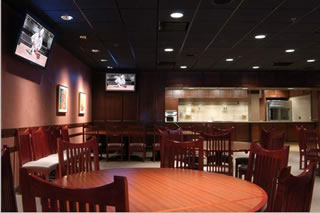 College of DuPage Broadcast ready AVCollege of DuPage uses sophisticated AV presentation and recording technology to create culinary theater productions
College of DuPage Broadcast ready AVCollege of DuPage uses sophisticated AV presentation and recording technology to create culinary theater productions
When Chicago’s College of DuPage – the nation’s largest junior college – set out to rebuild its culinary arts dining room, it wanted to create a “culinary theater” that would serve primarily as a hi-tech classroom. To meet the school’s objectives, the theater needed a professional quality video system that could record, play back, and archive cooking demonstrations for classroom instruction. The resulting Escoffier Culinary Theater is not only a major upgrade to the school’s food service education program, but it also helps attract students and the public to the campus.
Theater design
George Macht, the school’s hospitality program coordinator, says cooking shows on the Food Network, such as Emeril Live, served as the inspiration for the project. Once he knew what he wanted, Macht spent several months working out his ideas and brought in architect Bob Suennen of Evanston, Illinois-based OTA Partnership to design the space – a culinary theater featuring a 50-seat dining room. Lisle, Illinois-based Media Resources Inc. was later enlisted for the project’s AV equipment selection and installation.
The resulting AV system includes four automated cameras located in the theater’s large professional kitchen and adjoining display and service area. To provide the college with easy-to-use production capabilities, Media Resources equipped the system with wireless mics, DVD recording equipment and an AMX control system. Four plasma displays –two 42-inch Zenith P42W34/34H models and two 50-inch Samsung PPM50HS units– mounted in the dining room allow guests to watch student chefs prepare meals.
“What we tried to do was to show people the behind-the-scenes stuff that you wouldn’t see on the Emeril show, because here you have an actual working kitchen,” says Brian Maksa, vice president of sales and rental at Media Resources.
College of DuPage – Automated Camera 1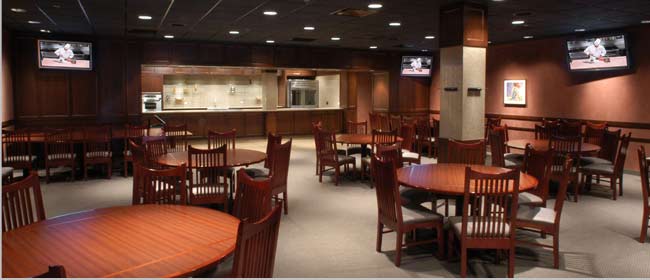
College of DuPage – Sitting Area
College of DuPage – Automated Camera 2
College of DuPage – Audience Seating
College of DuPage – Controls
College of DuPage – Rack System
Automated cameras
Because the large kitchen needed to accommodate constant use, airborne grease became a major concern in selecting the appropriate AV equipment for the project. “You can’t be sure what’s going to happen in there, so we used a domed Panasonic WV-CS854A camera where everything is enclosed and sealed,” Maksa says. “If we have any issues, we can just pop off the dome and replace it.”
The camera offers pan, tilt and zoom with 360-degree rotation. “You might not think this type of camera would give us the quality we need, but you’d be surprised,” he adds. “The nice thing about it is that we’re able to set up presets on the control system to focus it on various workstations around the room, whether that’s salads, meat preparation or pastries.”
Maksa also mounted three Sony DXC-390 three-chip cameras on AMX Positrack camera controllers on a soffit above the service pantry adjoining the dining room, which is used for lectures and demonstrations as well as meal assembly and buffet service during public meals. For production use, the video system includes three computer inputs to accommodate instructors’ presentation needs as well as VHS and DVD recording and playback capability. One use in particular stands out. “The students each learn to create a signature meal,” says Macht. “Now the school will be able to record them and give the students a DVD they can take to prospective employers.”
“Because the college has a full-blown broadcast department, we set it up so they can bring handheld cameras in, genlock them and live switch them,” Maksa says. The theater’s AV rack also includes three preview monitors and a character generator. “They can’t do dissolves or fades, but they can put a TV director in the AV room and do a very professional production,” Maksa says.
For the theater’s audio, Maksa built a sound system with Crown CTS600 and Biamp AudiaFLEX 1 amplifiers, Atlas FAP62T ceiling speakers and Audio Technica ESW-T211 wireless lavaliere microphones. A Sony CDPCE275 5-CD changer supplies background music for the theater. Maksa says the system has ducking audio so they can make announcements and there’s also feedback control.
To provide the college with automated control of the new system, Maksa installed a password-protected, 17-inch AMX Modero control panel and an Extron Crosspoint matrix switcher, which enables users to easily display four images simultaneously. “The large control panel makes the buttons easier to see and easier to understand,” he says. “It allows the department to have a very basic operator in there doing very sophisticated things.”
A future ready system
Media Resources also ensured that the AV system would allow the college to expand its capabilities in the future. The cameras and plasma displays installed in the theater help make the demonstrations visible to a large audience, and the video recording system enables the school to archive them for future use.
Macht says the college has more ideas for using the facility than it has time to implement. The school plans to eventually rent the facility to companies for demonstrating food product preparation to Chicago-area customers. “We even have the capability of broadcasting live on the Internet, either for distance learning or in conjunction with the rental program,” he says.
At the culinary theater’s grand opening in February, the college held a dinner that featured cooking demonstrations from guest chefs from chic Le Francais in Wheeling, Illinois and Opera in Chicago. Other special events have been a big success as well. Catherine Leveille, supervisor of the Foodservice Academic Lab, says the public response has been so strong that guests must buy tickets several months in advance.
Behind the stage set design
To light the area, Suennen chose Brightline’s T-Series fixtures, which are ceiling-mounted positionable fluorescent softlights designed for studios and videoconferencing rooms. Suennen says he used the daylight-colored fixtures because they can be matched to 5600K fluorescent tubes with very little color shifting. Finally, Suennen added a soffit about six feet in front of the counter to separate the serving area from the dining room. “We wanted to block the light fixtures and cameras hanging off the ceiling,” he says. “But it also sets up a line that makes a proscenium opening that helps direct people in the dining room away from that area.” |
From Pro AV Magazine, October, 2004. Copyright 2004, Ascend Media, Inc.
Used by permission. Click for printable copy of this article.
|
|
Cameras and video system
Display
|
Control
Audio
|



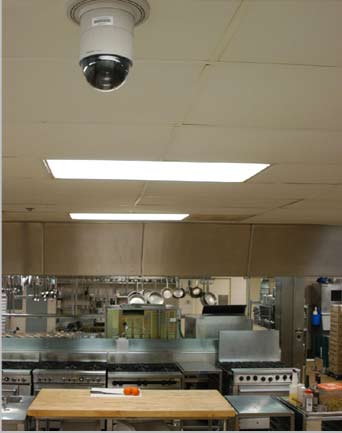
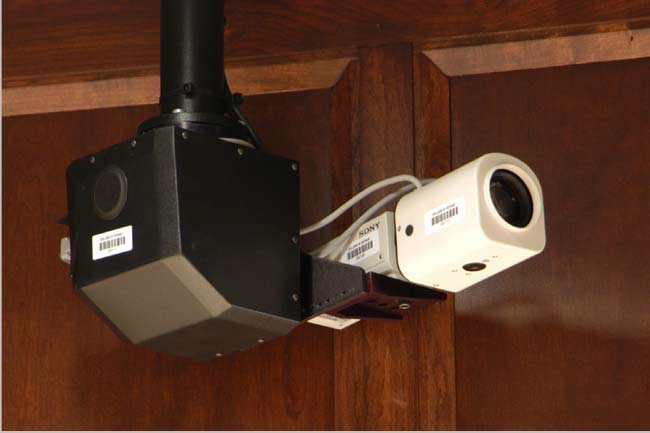
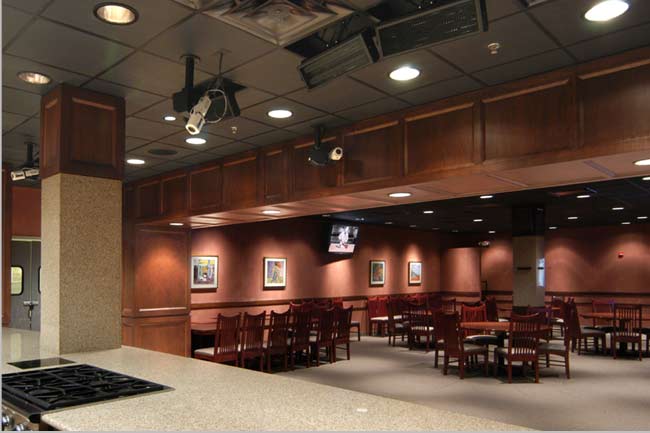
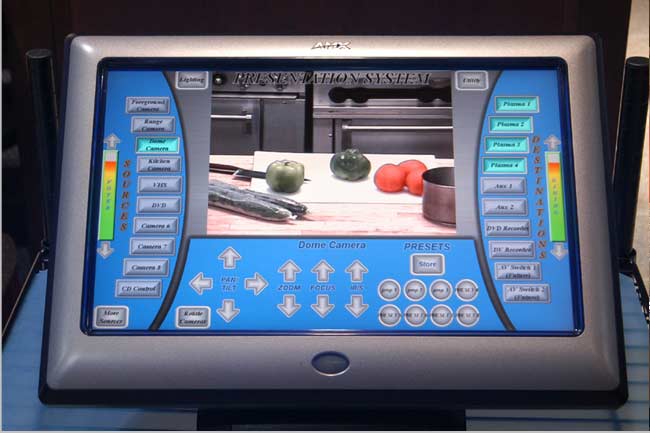
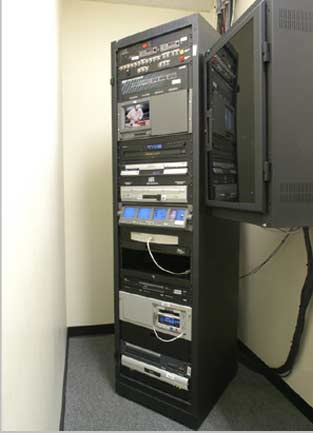
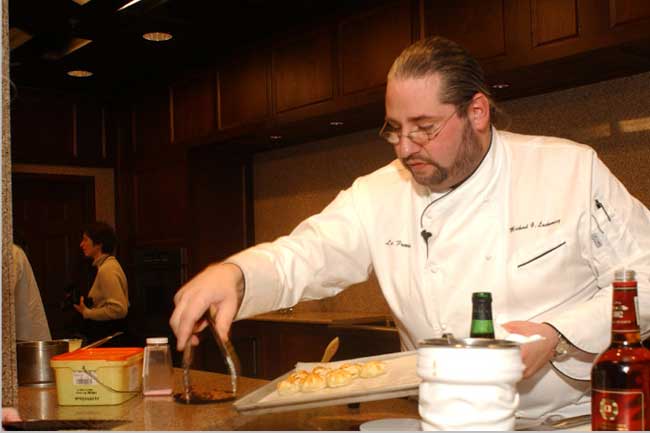 In planning the design for the new Escoffier Culinary Theater in Chicago’s College of DuPage, the project’s design team was charged with creating a serving area that could double as a stage set and with selecting materials that would reproduce well in digital video.Architect Bob Suennen of Evanston, Illinois-based OTA Partnership says the preliminary research was frustrating. “We came to the startling conclusion that in a lot of the video presentations the food was actually put on a butcher block cutting surface, rather than the hard surface designed for the space,” he says.After talking to other culinary schools and watching various programs on the Food Network, he determined that there weren’t any successful prototypes to work from. “Emeril Lagasse has a copper-tone counter top and I wondered if the copper would just distract from what they were trying to show,” Suennen says. “I toured another presentation kitchen where they used a black top. It looked great live, but they said the reflections off of that black are really annoying when they’re doing tape.”Suennen’s challenge was to find a low maintenance, sanitary surface that would look great with the food on video as well as with the dark cherry paneling he wanted to use in the dining room. After researching cooking shows, he thought a medium shade of stone might work well, but he wasn’t sure if the colors would shift or if glare would be an issue on camera. Suennen’s solution was to pick five stone colors and bring 2 by 2-foot samples to av,a-v, audio visual the college. To test the different choices, Suennen put a plate and a food presentation on each and then shot them with a digital video camera. After reviewing the results, Suennen determined the best solution: “Kona Beige” Silestone from Cosentino, which is a synthetic quartz material that meets NSF food-industry standards for sanitation.
In planning the design for the new Escoffier Culinary Theater in Chicago’s College of DuPage, the project’s design team was charged with creating a serving area that could double as a stage set and with selecting materials that would reproduce well in digital video.Architect Bob Suennen of Evanston, Illinois-based OTA Partnership says the preliminary research was frustrating. “We came to the startling conclusion that in a lot of the video presentations the food was actually put on a butcher block cutting surface, rather than the hard surface designed for the space,” he says.After talking to other culinary schools and watching various programs on the Food Network, he determined that there weren’t any successful prototypes to work from. “Emeril Lagasse has a copper-tone counter top and I wondered if the copper would just distract from what they were trying to show,” Suennen says. “I toured another presentation kitchen where they used a black top. It looked great live, but they said the reflections off of that black are really annoying when they’re doing tape.”Suennen’s challenge was to find a low maintenance, sanitary surface that would look great with the food on video as well as with the dark cherry paneling he wanted to use in the dining room. After researching cooking shows, he thought a medium shade of stone might work well, but he wasn’t sure if the colors would shift or if glare would be an issue on camera. Suennen’s solution was to pick five stone colors and bring 2 by 2-foot samples to av,a-v, audio visual the college. To test the different choices, Suennen put a plate and a food presentation on each and then shot them with a digital video camera. After reviewing the results, Suennen determined the best solution: “Kona Beige” Silestone from Cosentino, which is a synthetic quartz material that meets NSF food-industry standards for sanitation.